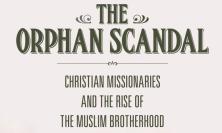Reza Aslan writes in a vivid, imaginative and popular style. The short chapters, uncluttered by footnotes, make the book a quick and easy read. But has it any real worth? What is the scholarly status of its author?
After securing a doctorate in the sociology of religions and a Master of Fine Arts in fiction, Aslan is Associate Professor of Creative Writing at the University of California, Riverside. While he has read widely in biblical scholarship, his book is riddled with significant and damaging gaps. If he had studied Raymond Brown’s classic and carefully argued The Birth of the Messiah, he might have been saved from facile judgments about the infancy narratives in Matthew and Luke. Currently the outstanding commentary on Mark’s Gospel is by Joel Markus. If Aslan had read that commentary, he could hardly have described Mark as simply ‘uninterested’ in the resurrection of Jesus (p. 29). The latter comment in puzzling in any case given that Mark’s Gospel contains three predictions of Jesus’s resurrection (in chapters 8, 9 and 10) and a repeated promise of a rendezvous in Galilee between the risen Jesus and his disciples (14:28; 16:7).
Aslan can read some Greek and tells readers that he can work out the rest with the help of dictionaries. But he appears unaware of Bauer-Danker’s standard dictionary of New Testament Greek, used by scholars everywhere.
Retrieving the nineteenth-century theory of F. C. Baur, Aslan pictures a violent clash between Paul and his followers on the one hand, and James and Peter on the other. It was Paul who ‘transformed Jesus from a revolutionary zealot into a Romanized demigod’ (p. 171). Some knowledge of recent scholarly writing on the relations between Paul, Peter and James (coming for example from Markus Bockmuehl and Martin Hengel) might have checked Aslan’s enthusiasm for following Baur’s interpretation of Christian origins. Moreover, the claim that Paul thought of himself not merely as equal to the other apostles but even as ‘the first apostle’ (p. 186; emphasis original) flies in the face of what Paul says in 1 Corinthians 15:8-9, verses about which Aslan has nothing to say. Aslan calls Luke (the author of Acts) ‘Paul’s sycophant’ (p. 185), but this is to slide over the fact that the Book of Acts would be more accurately called ‘the Acts of Peter and Paul.’
Here and there, Aslan cites some dubious ‘facts’: for instance, that Peter had come to Rome some years before Paul arrived (p. 196). When telling the story of crucifixion, Aslan informs us, quite gratuitously, that ‘dozens died with Jesus that day’ (p. 172).
Aslan wants to date all four gospels later, even much later, than most New Testament scholars. Pace Luke 1:2, he excludes any talk of eyewitness testimony (p. xxvi). He rightly defends the priority of Mark, but writes of the evangelist as simply ‘adding a chronological narrative’ to a ‘jumble of traditions’ (p. xxvi). What about Richard Bauckham’s recent and strong argument for the ancient tradition that Mark drew much from the eyewitness testimony of Peter?
Although he shows some acquaintance with the magisterial work on Jesus produced by John Meier, Aslan seems to be innocent about the various criteria that Meier and other scholars have proposed for identifying sayings and doings that reach back to the historical Jesus. Too often Aslan decides issues on the grounds that he personally finds a particular position or conclusion more attractive.
Aslan initially maintains that ‘there are only two hard historical facts about Jesus’ – he was a Jew who led a popular movement and Pilate crucified him for doing so (p. xxviii; emphasis added). But then he presses on to propose confidently (and sometimes correctly) a number of positions – for instance, that Jesus chose a core group of Twelve from among the wider ranks of his followers (pp. 97-98, 246-47) and that Jesus called himself ‘the Son of Man’ (pp. 136-44). In presenting Jesus as ‘a revolutionary Jewish nationalist’ (p. xxx), Aslan relies, in particular, on three further ‘hard historical facts’ – that Jesus entered triumphantly into Jerusalem, that he ‘cleansed’ the Temple, and that Aslan’s political interpretation of what Jesus meant by paying tribute to Caesar correctly reads what Jesus originally meant (pp. 73-78).
The author includes some careless generalisations and statements: for instance, that ‘there are numerous passages in the gospels in which Jesus is accused of consorting with “loose women”’ (p. 246; emphasis added). But apart from Luke 7:29, where does he find possible evidence for this generalisation? Even there, Simon the Pharisee did not make a public accusation of that kind, but merely ‘said this to himself.’ We are told that the parables of Jesus are ‘riddled’ with ‘anticlerical sentiments’ (p. 100). But, apart from the story of the Good Samaritan, where do we find such anticlerical sentiments in other parables, such as the prodigal son, the treasure in the field, the lost sheep, or the sower sowing his crop? Aslan states that, ‘in the letters of Paul Jesus is repeatedly described as “of the seed of David”’ (p. 227), and refers to Romans 1:3 and 2 Timothy 2:8; but he agrees that 2 Timothy is not a letter of Paul, so in fact he has only one example. Aslan asserts that the letters of Paul ‘make up the bulk of the New Testament’ (p. 29). But, even if we go beyond the seven letters that scholars normally acknowledge as authentic, Paul’s letters make up considerably less than one third of the New Testament.
We are assured that ‘all of Jesus’ miracle stories were embellished with the passage of time’ (p. 104; emphasis added). Certainly here and there we find minor embellishments. Where Mark 6:44 writes of Jesus miraculously feeding five thousand men, Matthew 14:21 adds, ‘not to mention the women and children.’ But where is the embellishment when Matthew 8:28-34 and Luke 8:26-39 abbreviate the story of Jesus delivering a possessed man in Gerasa (Mark 5:1-20)? Matthew and Luke, far from embellishing Mark’s story of the healing of a blind man at Bethsaida (Mark 8:22-26), simply omit it.
Aslan remarks that, ‘to the modern mind, the stories of Jesus’s healings and exorcisms seem implausible, to say the least’ (p. 104). What are we to say, then, about millions of Christians today who do accept these stories?
The publishers claim that this book is ‘meticulously researched’ and the product of ‘rigorous academic research’. It is hard to believe that any New Testament scholars would agree; significantly, none are cited in praise of the book.
By ‘sifting through centuries of mythmaking,’ Aslan is supposed to have ‘uncovered’ the truth that has been obscured or lost, and so ‘shed new light’ on the real, historical life of Jesus. Aslan calls the historian’s work ‘uncovering facts’, or – more fully – ‘a critical analysis of observable and verifiable events in the past’ (pp. 30-31; emphasis original). Not only is this nineteenth century notion of history long-discredited, it is not what Aslan has done. His subjective convictions have coloured what he is ready to admit to be ‘facts’ and ‘verifiable events’ and his interpretation of them. Give me rather Paul’s ‘sycophant,’ Luke, as a much more credible guide to the life and meaning of Jesus.
Gerald O’Collins SJ is a writer-in-residence at the Jesuit Theological College in Melbourne, Australia. He has authored or co-authored sixty books, including Christology: A Biblical, Historical, and Systematic Study of Jesus and Jesus: A Portrait.






